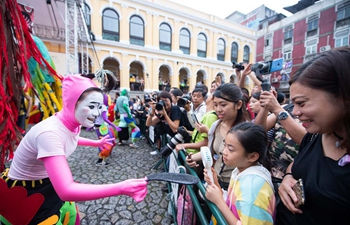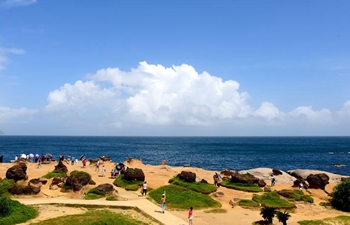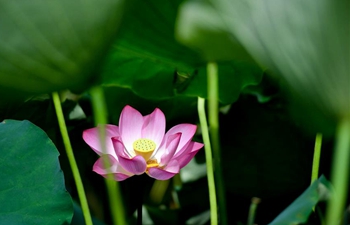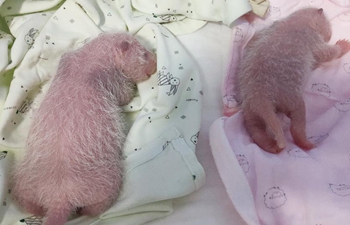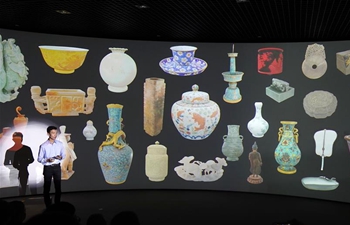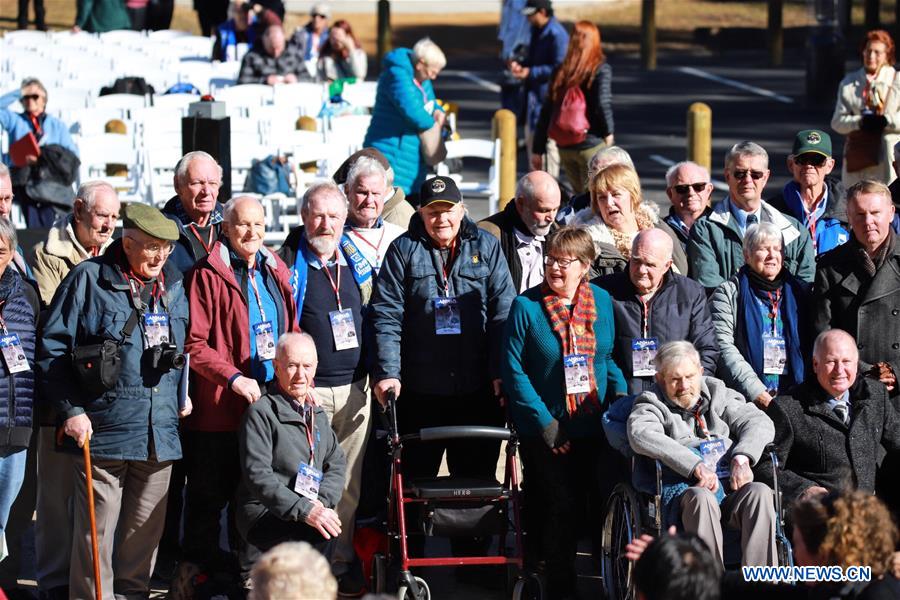
Former employees gather at the Honeysuckle Creek Tracking Station in Canberra, Australia on July 20, 2019. Saturday marks the 50th anniversary of moon landing by humans. Fifty years ago, when Apollo 11 first landed humans on the moon, Honeysuckle Creek was one of three main tracking stations that made live broadcast of the event possible, receiving and transmitting the image and sound of Neil Armstrong as he stepped onto the surface of the moon. (Xinhua/Liu Changchang)
By Xinhua writers Bai Xu, Yue Dongxing
CANBERRA, July 20 (Xinhua) -- The Honeysuckle Creek is normally a quiet place nestling in the mountains in the south of Australian capital Canberra, but the name of a road leading to the site betrayed its importance in history: Apollo.
Fifty years ago, when Apollo 11 first landed humans on the moon, Honeysuckle Creek was one of three main tracking stations that made live broadcast of the event possible, receiving and transmitting the image and sound of Neil Armstrong as he stepped onto the surface of the moon.
Fifty years later, the Australians took pride in their role for the event, which was deemed one of the most important in the 20th century.
"If not for Australia, 600 million people would not have seen the iconic image. And if not for Australia, nor would they have heard Neil Armstrong's iconic words," said Arthur B. Culvahouse, the U.S. Ambassador to Australia, on Saturday.
Saturday marks the 50th anniversary of moon landing by humans, one day after China's first space lab Tiangong-2 ended its mission and reentered the earth's atmosphere under control.
EXCITEMENT AND INSPIRATION
The Honeysuckle dish was moved to another site, but a sculpture was unveiled on Saturday by Culvahouse and Mick Gentleman, Minister for the Environment and Heritage of the Australian Capital Territory government. It bore the words "one small step for man, one giant leap for mankind."
Many former employees of the station also returned to share their memories.
Trevor Gray, 77, helped with TV signal for the broadcast 50 years ago. "I remember using various equipment. Something didn't fit and I ... made it fit. I didn't realize that later televisions around the world were going through that," he recalled.
When the astronauts landed on moon, he was at Honeysuckle, watching television. "It was very exciting," he said repeatedly.
Dr. Andy Thomas, the first Australia-born professional astronaut to enter space, was a 18-year-old student at the University of Adelaide in his first year of mechanical engineering at that time. He was inspired by Apollo 11.
"It was just amazing to see those images come from the moon, through the tracking station here, onto our television sets. It was a defining event of the 20th century," he told Xinhua in an interview.
The event was inspirational to him. He later joined the aerospace industry in the United States. "I dreamed of being an astronaut when I saw what the space program was doing, but I didn't consider it a very realistic prospect," he recalled. "It wasn't until later in life after I had been working in the U.S. aerospace industry for some time that I realized I could put together an application to become an astronaut."
The astronaut has spent 177 days in the space.
Looking into the future, he said that he wished to see humans returning to the moon and landing on Mars. "That will be a defining event for the 21st century."
He also talked about the progress China has made in space industry. "I have to say China's to be congratulated for landing the rover on the dark side or the far side of the moon," he said. "That was a very impressive technical undertaking, very impressive indeed."
FROM LEGEND TO REALITY
Although a legend in China about palace and fairy on the moon could be dated back to hundreds, or perhaps thousands of years. In 1969 there were not many Chinese families that had televisions.
After the reform and opening up, China has been developing rapidly.
In 1992, China started the manned space program with a three-step strategy. The first step, to send an astronaut into space and return safely, was fulfilled by Yang Liwei in the Shenzhou-5 mission in 2003. So far, the country has launched 11 manned spaceships, sending 11 astronauts into space.
It launched the first moon rover in December 2013 and plans to launch the Mars probe in 2020. The success of the Tiangong-2 mission has ushered in the era of building China's space station, which is expected to be completed around 2022.
Thomas said he hopes that in years to come there will be more collaboration between China and other space agencies throughout the world, "so that when we do go to Mars, it will be truly for all humankind, not just for one country."
He remembered that when he had training in a space station in Moscow in 1997, there were two Chinese.
"They were the first ones sent to Russia in preparation for the Chinese human spaceflight and they were nice guys," he recalled.
Talking about China's space dream, Trevor Gray also hailed the country's big progress.
"I didn't think of flying around the world (in my childhood), which I have done," he said. "A lot of things happened. I have seen many changes. We now have a lot of made-in-China, which I do appreciate. Anything could happen."


